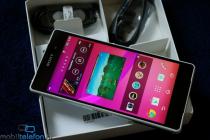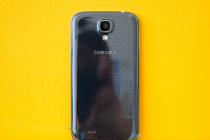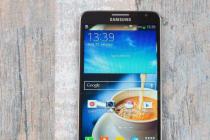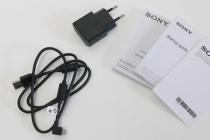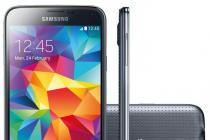Nothing is permanent. What until recently seemed like something outlandish, today does not cause the slightest surprise. Xiaomi was no exception, presenting the Xiaomi Mi A1 model to users. The device attracts the closest attention and has a number of interesting nuances.
The development was prepared in close cooperation with Google, which is quite a rarity. In addition, the smartphone does not contain the beloved MIUI graphical shell. Available exclusively "naked" Android OS with the possibility of future updates. The combination is interesting and original, so you should familiarize yourself with the device in more detail.
Design and ergonomics
For the case, the manufacturer chose metal, diluting it with plastic covers that cover the antennas that are responsible for the operation of the wireless modules. As for the design, the brand remained true to itself and presented a product that fully corresponds to current trends. That is, lovers of innovations and innovative ideas will not find anything worthy of attention here. A typical form factor with standard solutions that have successfully proven themselves in the company's previous models.

It is worth noting the possibility of reassigning functions to control buttons for greater user convenience. This trend is gaining more and more demand and is found in the overwhelming majority of all phones produced today.
Ports and communications are located in their usual places - everything is at hand and does not require getting used to. Ergonomics are implemented at a decent level. This concerns the workmanship and materials used. Their tactility is excellent, contact with the hand does not cause discomfort.

Convenient control and use of the device is guaranteed for a long period. Users will be able to choose a model in pink, black or gold.
Display
The Mi A1 from Xiaomi is equipped with a 5.5-inch IPS display, with a resolution in FHD format. Responsible for protection is Gorilla Glass, the screen is made using 2.5D technology. Oleophobic coating is available - it is problematic to call it the best available, although the available one is enough to ensure comfortable conditions of use.

Color reproduction raises no objections, everything is natural and with correct balancing. The image contrast is excellent, and the brightness can be adjusted over a wide range. This allows you to comfortably use your smartphone not only in the dark, but also during a sunny day. Excessive light does not degrade the quality of the display.

There are a number of predefined adjustments, including the ability to change the scale of the interface and the size of the displayed fonts.
Performance
It's time to take a closer look at the characteristics of the Xiaomi Mi A1 model. At the heart of the device is the Snapdragon 625 chipset, each of the 8 cores of which operates at a frequency of 2 GHz. Graphics processing is provided by the Adreno 506 accelerator, the overall picture is complemented by 4 GB RAM.

The available metrics are sufficient to ensure uninterrupted and productive operation in various applications. And the device copes very well with games. The only thing that causes some bewilderment is the overheating of the smartphone with a significant load on its hardware. Since there are no own thermoregulation algorithms in the "bare" OS, it is not yet possible to count on the improvement of the situation.
It is worth noting the presence of a 10 V audio amplifier, thanks to which you can integrate any headphones with the device, including professional studio headphones. The sound in the device is excellent, the bass is moderate, the frequency division is correct. Wheezing and distortion are adequate even at maximum volume.
Software
Xiaomi Mi A1 runs on Android 7. The firmware is updated as new versions are released. Everything in the device is made according to the standards accepted by Google. The spectacle is rather unusual, although there are still certain innovations here. It is worth noting the presence of telemetry. It is placed in a separate menu and does not have Russification, which can pose certain problems for users.

There is an option to turn on / off according to the schedule. There are a number of pre-installed applications, everything else can be downloaded through specialized services.
Camera
The camera in Xiaomi Mi A1 is represented by three modules. The front one has a resolution of 5 megapixels, the main one has a dual version with a resolution of 12 megapixels. The focus distance of the main camera is different and is 26 and 50 mm, which allows you to take photos with bokeh effect. The level of its performance is quite high and does not differ much from that which "DSLRs" can offer.

The picture quality is good. I am pleased with excellent detailing of frames, bright and rich colors, maximum realism and naturalness. The 2x optical zoom allows you to shoot objects at a significant distance, and without significant deterioration in quality. It is worth noting the possibility of taking pictures with a blurred background:

day photo:


When there is a lack of lighting, the level of pictures decreases. This problem is typical and inherent in many of the models produced today. The solution may be to equip smartphones with better optics, but for now it remains to work with what is available.
Autonomous work
The battery capacity is 3080 mAh. The indicator is not high, but the combination of an energy-saving chipset with a "bare" OS allows you to use the device without recharging for a long period. Maximum active engagement ensures continuous operation for 7 hours. Provided that the battery is economically consumed, you can not think about its charge for one and a half days.
There is no fast charging option on the Xiaomi Mi A1; it takes just over two hours to fill the battery pack completely.
Pros and cons of Xiaomi Mi A1
It should be admitted that Mi A1 is a rather successful model in a number of aspects. To many, it may seem unusual and original, and the lack of a proprietary shell undoubtedly affects. At the same time, there are no complaints about the quality of work, the device operates flawlessly and solves all tasks set for it, including multimedia.
Speaking about the advantages of the device, you should pay attention to the following:
- Metal body;
- Solid build;
- Excellent hardware;
- New OS version.
As for the shortcomings, they are as follows:
- There is no NFC;
- Not the best oleophobic display coating;
- Long GPS startup.
Specifications Xiaomi Mi A1
| General characteristics | |
| A type | smartphone |
| OS version | Android 7.1 |
| Type of shell | classical |
| Body material | metal |
| Control | touch buttons |
| SIM card type | nano SIM |
| Number of SIM-cards | 2 |
| Mode of operation of multiple SIM-cards | alternating |
| Weight | 165 g |
| Dimensions (WxHxT) | 75.8x155.4x7.3 mm |
| Screen | |
| Screen type | color IPS, touch |
| Touch screen type | multitouch, capacitive |
| Diagonal | 5.5 in. |
| Image size | 1920x1080 |
| Pixels Per Inch (PPI) | 401 |
| Automatic screen rotation | there is |
| Scratch resistant glass | there is |
| Multimedia capabilities | |
| Rear camera | double 12/12 MP |
| Photo flash | rear, LED |
| Rear camera functions | autofocus, optical stabilization, optical Zoom 2x |
| Rear Camera Aperture | F / 2.2 |
| Video recording | there is |
| Max. video resolution | 1920x1080 |
| Max. video frame rate | 30 frames / s |
| Front-camera | yes, 5 million pixels. |
| Audio | MP3, AAC, WAV, WMA |
| Headphone jack | 3.5 mm |
| Connection | |
| Standard | GSM 900/1800/1900, 3G, 4G LTE |
| Support for LTE bands | bands 1, 1800, 2100, 2600, 3, 7 |
| Interfaces | Wi-Fi 802.11n, Bluetooth 4.2, USB |
| Satellite navigation | GPS / GLONASS / BeiDou |
| Memory and processor | |
| CPU | Qualcomm Snapdragon 625 MSM8953, 2000 MHz |
| Number of processor cores | 8 |
| Video processor | Adreno 506 |
| Built-in memory | 64 GB |
| RAM size | 4 GB |
| Memory card slot | yes, up to 128 GB |
| Nutrition | |
| Battery capacity | 3080 mAh |
| Battery | non-removable |
| Charging connector type | USB Type-C |
| Other functions | |
| Speakerphone (built-in speaker) | there is |
| Control | voice dialing, voice control |
| Flight mode | there is |
| Sensors | Illumination, Proximity, Hall, Gyroscope, Fingerprint Reading |
| Flashlight | there is |
| USB-host | there is |
In early September, Xiaomi, in collaboration with Google, launched its first Android One device, the Xiaomi Mi A1. This Google initiative is aimed at creating simple smartphones with a "clean" version of Android and regularly updated software for a long time. Thus, Mi A1 is a landmark device not only for the Chinese manufacturer, which is the first device without its own MIUI shell, but also for Google. Jamie Rosenberg, vice president of Google for Android and Google Play, said at the presentation: “This is the next step in the development of Android One. We are pleased to work with partners around the world to bring quality Android devices to even more users. Mi A1 is a premium design with pure Android, the best built-in Google services, and regular software and security updates. We are delighted to welcome Xiaomi and Mi A1 to the Android One family. ”

Main characteristics of Xiaomi Mi A1 (model MDG2)
- SoC Qualcomm Snapdragon 625, Octa-core ARM Cortex-A53 @ 2.0GHz
- GPU Adreno 506 (650 MHz)
- Operating system Android 7.1.2
- 5.5 ″ IPS IGZO touchscreen display, 1920 × 1080, 401 ppi
- Random access memory (RAM) 4 GB, internal memory 64 GB
- Nano-SIM support (2 pcs.)
- MicroSD support
- GSM networks (900/1800 MHz)
- WCDMA / HSPA + networks (900/2100 MHz)
- LTE FDD (B1 / 3/7/8/20), TD (B38 / 40) networks
- Wi-Fi 802.11a / b / g / n / ac (2.4 and 5 GHz)
- Bluetooth 4.2
- USB Type-C, USB OTG
- GPS, A-GPS, Glonass, BDS
- Main camera 12 MP, f / 2.2, wide-angle lens, autofocus, 4K video
- Secondary camera 12 MP, f / 2.6, telephoto lens
- Front camera 5 MP, f / 2.0
- Proximity sensor, lighting, magnetic field, fingerprint, gyroscope, step detector, infrared
- Battery 3080 mAh, Quick Charge 3.0
- Dimensions 155 x 76 x 7.3 mm
- Weight 162 g
Contents of delivery
The packaging of Mi A1 is made in the same style for all the latest Xiaomi mobile products with the most laconic design. The solid white cardboard box is decorated only with the logo, and the brief technical specifications are printed on a thin flexible cardboard dust jacket.

The kit consists of a USB cable and a power adapter (5 V 2 A). The key for ejecting cards is fixed on a cardboard insert as standard. Nothing else is included in the kit.


Appearance and usability
Xiaomi Mi A1 received a pleasant-looking body, thin and not too heavy, with matte surfaces and strongly rounded corners in plan. The picture is completed by the front 2.5D glass, which also has sloping edges, smoothly joining the rounded side edges.

The metal is matte, the surfaces of the body are non-marking, they do not leave fingerprints, even on the black body. True, the prints are clearly visible on the round area of the fingerprint scanner, which makes the overall look of the smartphone somewhat sloppy.

Xiaomi Mi A1 has dimensions befitting a 5.5-inch display, such a device cannot be called small and elegant. The width of the case is visually further emphasized by the small thickness - only 7.3 mm. The body of the device, in principle, is not slippery, but due to this combination of width and thickness, it is not very secure in the hand.
 |
 |
The back panel houses a dual camera module with flash. The flash is also double, it consists of multi-colored diodes, it shines brightly. The camera module protrudes slightly beyond the surface, so it's not very convenient to work with a smartphone lying on the table, especially considering the rear location of the fingerprint scanner.

The area of the fingerprint sensor is noticeably recessed inward. There are no complaints about the operation of the fingerprint scanner, the recognition is clear and fast, the finger can be brought up from any angle.

The front panel is completely covered with 2.5D glass with angled edges. In the upper part above the screen, sensors, a peephole of the front camera, and an LED event indicator are habitually located. The milky indicator is dim to indicate missed events and charging status.

Under the screen there is a familiar row of three touch-sensitive hardware buttons, which also received their own backlight. You cannot reassign button functions without an alternative interface.

The side keys are large, they are the same to the touch, they have a soft and pliable stroke, but a distinct response. There are no complaints about these elements.

The slot for cards, located on the left side, is hybrid: a Nano-SIM card and a memory card or a second SIM-card of the Nano-SIM format are inserted into it.

At the bottom end, there is a 3.5 mm headphone output, an earpiece microphone hole, a main speaker output, and a USB Type-C connector that supports connecting external devices in USB OTG mode.

On the upper end, there is an auxiliary microphone for the operation of the noise canceling system and an infrared port for emulating the remote control (a corresponding application is preinstalled in the smartphone for its operation).

The device is available in black, gold and pink. The front panel does not always match the overall color of the case: in the pink and gold variants, it is just white. The case of Xiaomi Mi A1 is not protected from moisture and dust.

Screen
Xiaomi Mi A1 is equipped with an IPS display with 2.5D Gorilla Glass. The dimensions of the screen are approximately 68 × 121 mm with a diagonal of 5.5 inches. The resolution is 1920 × 1080, and the dot density is about 401 ppi.
The width of the frame around the screen from the sides is about 3.5 mm, the indents at the top and bottom are about 18 mm high.
The brightness of the display can be manually adjusted or automatic settings can be used based on the operation of the ambient light sensor. Multi-touch tests diagnose support for 10 simultaneous touches. Tap to activate the screen is not available.
 |
 |
A detailed examination using measuring instruments was carried out by the editor of the "Monitors" and "Projectors and TV" sections Alexey Kudryavtsev... Here is his expert opinion on the screen of the test sample.
The front surface of the screen is made in the form of a glass plate with a mirror-smooth surface, resistant to scratches. Judging by the reflection of objects, the anti-glare properties of the screen do not differ much from the screen properties of Google Nexus 7 (2013) (hereinafter simply Nexus 7). For clarity, we present a photo in which a white surface is reflected in the turned off screens (on the left - Nexus 7, on the right - Xiaomi Mi A1, then they can be distinguished by their size):

The screen of the Xiaomi Mi A1 is slightly lighter (brightness in the photos is 129 versus 122 for the Nexus 7). The doubling of reflected objects in the Xiaomi Mi A1 screen is very weak, which indicates that there is no air gap between the layers of the screen (more specifically, between the outer glass and the surface of the LCD matrix) (OGS type screen - One Glass Solution). Due to the smaller number of boundaries (such as glass / air) with greatly different refractive indices, such screens look better in conditions of intense ambient light, but their repair in the case of cracked outer glass is much more expensive, since the entire screen has to be changed. On the outer surface of the screen there is a special oleophobic (grease-repellent) coating (about the same efficiency as the Nexus 7), so fingerprints are much easier to remove, and appear at a slower rate than in the case of ordinary glass.
With manual brightness control and with the display of the white field on the whole screen, the maximum brightness value was about 540 cd / m², the minimum - 2 cd / m². The maximum brightness is very high, and given the good anti-glare properties, readability even on a sunny day outdoors should be at a decent level. In complete darkness, the brightness can be lowered to a comfortable value. In the presence of automatic brightness control by the light sensor (it is located to the left of the front camera). In automatic mode, when the ambient light conditions change, the screen brightness both increases and decreases. This function depends on the position of the brightness adjustment slider. If it is 100%, then in complete darkness, the auto brightness function reduces the brightness to 110 cd / m2 (too bright), in an office illuminated with artificial light (about 550 lux) it sets at 420 cd / m2 (too high), in a very bright environment ( corresponds to illumination on a clear day outdoors, but without direct sunlight - 20,000 lux or a little more), the brightness rises to 540 cd / m² (to the maximum - this is what you need). If the slider is about 50%, then the values are as follows: 22, 290 and 540 cd / m² (suitable values); and if at 0% - 2, 150 and 540 cd / m² (the first value is too low). It turns out that the automatic brightness control function works adequately and allows the user to customize his work for individual requirements. At any brightness level, there is no significant backlight modulation, so there is no screen flickering either.
This smartphone uses an IPS-type matrix. The micrographs show the typical IPS subpixel structure:

For comparison, you can see the gallery of photomicrographs of screens used in mobile technology.
The screen has good viewing angles without significant color shift even with large gaze deviations from perpendicular to the screen and without tint inversion. For comparison, we present photographs in which the same images are displayed on the screens of Xiaomi Mi A1 and Nexus 7, while the brightness of the screens was initially set to about 200 cd / m2, and the color balance on the camera was forcibly switched to 6500 K.
White field perpendicular to screens:

Note the good uniformity of brightness and color tone of the white field.
And the test picture:

The colors on the Xiaomi Mi A1 screen have natural saturation, the color balance between the Nexus 7 and the tested screen is clearly different.
Now at an angle of approximately 45 degrees to the plane and to the side of the screen:

It can be seen that the colors did not change much on both screens, but on the Xiaomi Mi A1 the contrast decreased to a large extent due to the strong highlighting of black.
And white box:

The brightness at an angle at the screens has decreased (at least 5 times, based on the difference in exposure), but the Xiaomi Mi A1 has a slightly greater decrease in brightness. When deviated diagonally, the black field is lightened strongly and acquires a red-violet tint. The photos below demonstrate this (the brightness of the white areas in the direction perpendicular to the plane of the screens is the same!):

And from a different angle:

When viewed from a perpendicular view, the black field uniformity is very good:

Contrast (approximately in the center of the screen) is high - about 1300: 1. The response time for the transition black-white-black is 27 ms (13 ms on + 14 ms off). The transition between gray tones of 25% and 75% (based on the numerical value of the color) and back takes 51 ms in total. The gamma curve, plotted using 32 points at equal intervals in terms of the numerical value of the shade of gray, did not reveal a blockage in either the highlights or the shadows. The exponent of the approximating power function is 2.22, which is close to the standard value of 2.2. In this case, the real gamma curve deviates little from the power dependence:

We did not reveal the presence of dynamic adjustment of the backlight brightness in accordance with the nature of the displayed image, which is very good.
The color gamut is close to sRGB:

The spectra show that the matrix filters mix the components together to a moderate extent:

As a result, colors have natural saturation and hue. The grayscale balance is a compromise, since the color temperature is well above the standard 6500 K, but the deviation from the spectrum of the absolute black body (ΔE) is below 3, which is considered an excellent indicator for a consumer device. At the same time, both parameters change little from shade to shade - this has a positive effect on the visual assessment of the color balance. (The darkest areas of the gray scale can be ignored, since the color balance there is not very important, and the error in measuring color characteristics at low brightness is large.)


To summarize: the screen has a very high maximum brightness and has good anti-reflective properties, so the device can be used outdoors without any problems even on a sunny summer day. In complete darkness, the brightness can be lowered to a comfortable level. It is also acceptable to use the mode with automatic brightness adjustment, which works adequately. Also, the advantages of the screen include the presence of an effective oleophobic coating, the absence of an air gap in the layers of the screen and flickering, a good uniformity of the black field, a color gamut close to sRGB. Significant disadvantages - low stability of black to deviation of the gaze from the perpendicular to the plane of the screen. Nevertheless, taking into account the importance of characteristics for this particular class of devices, the screen quality can be considered high.
Camera
The front module received a sensor with a resolution of 5 megapixels and a lens with an f / 2.0 aperture without its own flash and autofocus. In addition to the usual modes of decorating a portrait and determining the gender and age of the subject, a group selfie mode has appeared, in which the program takes several consecutive shots, analyzes and produces one common image with the best version of each of the faces.
As for the Beautify mode, it can work in automatic mode or with manual settings, and it can also be turned off completely. By default, it is always on, this noticeably changes the appearance of the person in the photo, completely blurring the texture of his skin.
The quality of the shooting itself is average: even in good daylight, there are both dark and highly overexposed areas at the same time due to the small width of the dynamic range of the 5-megapixel sensor.
 |
 |
 |
 |
A set of two modules is used as the main camera, one of which has a wide-angle five-element lens with an f / 2.2 aperture and a 12 megapixel sensor (pixel size 1.25 microns). The second module is also 12-megapixel (pixel size 1.0 µm), it is equipped with a telephoto lens with an aperture of f / 2.6 (the equivalent focal length is 50 mm, the lens is also five-element). As a result, the camera provides the ability to double optical zoom, as well as blur the background (with a bokeh effect). There is no optical stabilization, the flash is double, bright.
The camera can shoot video in maximum 4K resolution, as well as in Full HD (1920 × 1080) at 30 fps, but there is no 60 fps mode. Slow-mo 720p 120 fps mode is standard.
The camera copes with video shooting average. In daylight, everything is fine, but indoors the frame rate drops to 15 per second, the detail drops noticeably. There is no stabilization, even with static panning from the hands, any shaking is very noticeable, it is almost impossible to make a smooth video sequence here. In addition, in all its glory, the typical Xiaomi disease of the noise reduction system when recording sound manifested itself, which adds noticeable distortion in the form of an echo, so that the soundtrack of the videos turns into an unintelligible mess.
- Movie # 1 (67 MB, 3840 × [email protected] fps, H.264, AAC)
- Movie # 2 (73 MB, 3840 × [email protected] fps, H.264, AAC)
- Movie # 3 (96 MB, 3840 × [email protected] fps, H.264, AAC)
- Movie # 4 (60 MB, 3840 × [email protected] fps, H.264, AAC)
- Movie # 5 (18 MB, 1920 × [email protected] fps, H.264, AAC)
The camera turned out to be good, in some places even very good. There is practically nothing to find fault with here. She does not overuse software processing, although weak sharping can be found if you look at the pictures for a long time. Sometimes there are noticeable noises in the shadows. In general, even in low light, the camera produces a very decent result, it is well suited for documentary and artistic photography.
Telephone part and communications
The communication capabilities of the Xiaomi Mi A1 include support for data transmission in LTE FDD and TD networks. Including all the most common frequency ranges in our country (Band 3, 7 and 20 FDD LTE) are supported. The supported set of frequencies may vary depending on the modification, in general it looks like this:
| Mode | Band |
|---|---|
| Gsm | B2, B3, B5, B8 |
| UMTS | B1, B2, B5, B8 |
| FDD-LTE | B1, B3, B5, B7, B8, B20 |
| TDD-LTE | B38, B40 |
In the city limits of the Moscow region, the device behaves confidently, does not lose connection in places of poor reception, and quickly re-establishes the connection. The speed in the LTE network is stable, there are no problems with the connection in 4G. Other connectivity options include support for both Wi-Fi bands (2.4 and 5 GHz) and 802.11ac, as well as Bluetooth 4.2. But there is no NFC module in the smartphone.
The navigation module works with GPS (with A-GPS), with the domestic Glonass and with the Chinese Beidou. The first satellites during a cold start are detected within tens of seconds, the positioning accuracy on the territory of the Moscow region is average. There is a built-in magnetic field sensor for compass operation.
 |
 |
The phone application supports Smart Dial, that is, when dialing a phone number, a search is immediately carried out by the first letters in contacts. The telephone interface is standard, including in terms of sorting and displaying contacts: sorting is possible by surname or first name, the same is with the display of the subscriber's data when calling.
In the conversational dynamics, the voice of a familiar interlocutor is well recognizable, there is no extraneous noise, the sound is natural, pleasant to the ear, bright, rich and clear, the volume reserve is sufficient. There is support for VoLTE. The vibration alert, on the other hand, is not very powerful, you can even skip this one.
 |
 |
 |
 |
 |
 |
The platform supports active waiting for both SIM cards in 3G / 4G at the same time. That is, a SIM card can be actively waiting in the network not only in 2G, but also in 3G, even if another card is assigned for data transmission in 4G (for example, the Beeline SIM cards as the main one and Moscow Tele2 are active while waiting at the same time) ... The interface allows you to preselect a specific card for sending SMS, and for voice calls, and for data transmission. The cards work in Dual SIM Dual Standby mode, there is only one radio modem here.
 |
 |
Software and multimedia
As a software platform, Xiaomi Mi A1 uses Android OS of not the most recent version 7.1.2 - of course, with the ability to update over the air (OTA). As mentioned at the beginning of the article, this smartphone was the first device released by Xiaomi on a pure Android OS without its own proprietary MIUI shell, but with the possibility of long-term support. At the same time, at the time of the publication of the review, the device had not received the 8th version of Android (more than two months had passed), and at the press conference it was indicated that the promptness of the release of updates would be lower than, say, for the same Google smartphones. Pixel. As they say, time will tell, but for now let's turn to what is available.
The interface and settings are fully consistent with pure Android, no changes have been made here. There is a full set of Google Apps, a full-fledged Play Store, there are rudiments of working with gestures (quick access to notifications using a fingerprint scanner and quick access to the camera using the power key). No third-party applications, except for Mi Remote Control and programs for communicating with developers (to describe problems and suggestions), are not installed in this device.
 |
 |
 |
 |
 |
 |
To listen to music, a regular Google Music player is used with a familiar interface and manual settings, most of which are available only when headphones are connected. Both in the headphones and in the external speaker, the sound is clear, rich, bright and loud enough thanks to the next generation NXP Smart PA dedicated audio chip with support for Dirac HD Sound software technology. The amplifier supports the connection of high impedance headphones (up to 600 ohms).
 |
 |
 |
 |
Performance
The hardware platform Xiaomi Mi A1 is based on the Qualcomm Snapdragon 625 SoC, made using 14-nanometer technology. This SoC includes eight 64-bit ARM Cortex-A53 cores with a frequency of up to 2.0 GHz, the Adreno 506 video accelerator with a core frequency of up to 650 MHz is responsible for graphics processing, with support for the OpenGL ES 3.2 graphics API. The amount of RAM is 4 GB, and the built-in flash memory is 64 GB (there are modifications with a different amount of flash memory). Of these, on average, about 50 GB of storage space and 1.7 GB of RAM are free.
Qualcomm Snapdragon 625 is a platform designed for mid-range smartphones. This is no longer the most interesting chip in its category, it was replaced by the Snapdragon 626 with a higher core frequency (2.2 GHz instead of 2.0 GHz). However, Xiaomi Mi A1 is aimed at emerging markets and is offered at a low price, so the cost of the components was clearly taken into account when creating this smartphone.
Thanks to the 14 nm process technology, the SoC combines good performance with low power consumption, in the AnTuTu test the hero of the review gains more than 60K points, this is a confident average level. SoC provides confident performance and in real scenarios allows the smartphone to cope with any task. There are no problems with games either, all games we tested, such as Modern Combat 5 and Mortal Kombat X, run without the slightest lags.


Benchmarking AnTuTu and GeekBench:
All the results obtained by us when testing the smartphone in the latest versions of popular benchmarks, we have summarized in tables for convenience. Several other devices from different segments are usually added to the table, also tested on similar latest versions of benchmarks (this is done only for a visual assessment of the obtained dry numbers). Unfortunately, within the framework of one comparison, it is impossible to present the results from different versions of benchmarks, therefore, many worthy and relevant models remain behind the scenes - due to the fact that they once passed the “obstacle course” on previous versions of test programs.
| Xiaomi Mi A1 (Qualcomm Snapdragon 625) |
Sony Xperia XA1 (MediaTek MT 6757) |
HTC One X10 (MediaTek (MT6755) |
Huawei Nova 2 (HiSilicon Kirin 659) |
Nokia 5 (Qualcomm Snapdragon 430) |
|
|---|---|---|---|---|---|
| AnTuTu (v6.x) (more is better) |
63361 | 61638 | 50597 | 60485 | 45287 |
| GeekBench (v4.x) (more is better) |
873/4014 | 814/3518 | 757/2071 | 904/3513 | 672/2867 |
 |
 |
Testing the graphics subsystem in gaming tests 3DMark, GFXBenchmark and Bonsai Benchmark:
When testing in 3DMark for the highest performing smartphones, it is now possible to run the application in Unlimited mode, where the rendering resolution is fixed at 720p and VSync is disabled (which can cause the speed to rise above 60 fps).
| Xiaomi Mi A1 (Qualcomm Snapdragon 625) |
Sony Xperia XA1 (MediaTek MT 6757) |
HTC One X10 (MediaTek (MT6755) |
Huawei Nova 2 (HiSilicon Kirin 659) |
Nokia 5 (Qualcomm Snapdragon 430) |
|
|---|---|---|---|---|---|
| 3DMark Ice Storm Sling Shot ES 3.1 (more is better) |
463 | 671 | 421 | 413 | 299 |
(Onscreen, fps) |
6 | 15 | 5 | 5 | 10 |
| GFXBenchmark Manhattan ES 3.1 (1080p Offscreen, fps) |
6 | 6 | 5 | 5 | 4,6 |
| GFXBenchmark T-Rex (Onscreen, fps) |
21 | 32 | 17 | 20 | 20 |
| GFXBenchmark T-Rex (1080p Offscreen, fps) |
22 | 21 | 17 | 18 | 16 |
 |
 |
Browser cross-platform tests:
As for benchmarks for evaluating the speed of a javascript engine, you should always make allowances for the fact that the results in them significantly depend on the browser in which they are launched, so that the comparison can be truly correct only on the same OS and browsers, and this possibility is available when testing not always. In the case of Android OS, we always try to use Google Chrome.
| Xiaomi Mi A1 (Qualcomm Snapdragon 625) |
Sony Xperia XA1 (MediaTek MT 6757) |
HTC One X10 (MediaTek (MT6755) |
Huawei Nova 2 (HiSilicon Kirin 659) |
Nokia 5 (Qualcomm Snapdragon 430) |
|
|---|---|---|---|---|---|
| Mozilla kraken (ms, less is better) |
7910 | 9284 | 9992 | 8887 | 12559 |
| Google octane 2 (more is better) |
4885 | 4489 | 3928 | 4828 | 2823 |
| SunSpider (ms, less is better) |
880 | 946 | 1104 | 1310 | 1970 |
 |
 |
 |
AndroBench memory speed test results:

Heat images
Below is a thermal image back surface obtained after 10 minutes of running the battery test in the GFXBenchmark program:

Heating is more localized in the upper part of the device, which, apparently, corresponds to the location of the SoC. According to the heat chamber, the maximum heating was only 31 degrees (at an ambient temperature of 24 degrees), this is very little.
Video playback
To test the "omnivorous" video playback (including support for various codecs, containers and special features, such as subtitles), we used the most common formats, which make up the bulk of the content available on the Web. Note that it is important for mobile devices to have support for hardware video decoding at the chip level, since it is often impossible to process modern versions using processor cores alone. Also, do not expect a mobile device to decode everything, since the leadership in flexibility belongs to the PC, and no one is going to challenge it. All results are tabulated.
Further video playback testing was done by Alexey Kudryavtsev.
We could not theoretically test the possible support for adapters for outputting images to an external device due to the lack of an adapter option that connects to the USB Type-C port, so we had to limit ourselves to testing the output of video files on the screen of the device itself. To do this, we used a set of test files with an arrow and a rectangle moving one division per frame (see "Testing techniques for video playback and display devices. Version 1 (for mobile devices)"). Screenshots with an exposure of 1 s helped to determine the nature of the frame output of video files with various parameters: the resolution varied (1280 by 720 (720p), 1920 by 1080 (1080p) and 3840 by 2160 (4K) pixels) and the frame rate (24, 25, 30, 50 and 60 fps). In our tests, we used the MX Player video player in the "Hardware" mode. The test results are summarized in the table:
4K / 30p 1080 / 25p 720 / 24p
Note: If both columns Uniformity and Skips green ratings are set, this means that, most likely, when watching movies, artifacts caused by uneven alternation and skipping of frames will either not be visible at all, or their number and visibility will not affect the viewing comfort. Red marks indicate possible problems with the playback of the respective files.
According to the criterion for outputting frames, the quality of video playback on the screen of the smartphone itself is very good, since frames (or groups of frames) can (but are not required) to be displayed with uniform intervals and without frame drops. When playing video files with a resolution of 1920 by 1080 pixels (1080p) on a smartphone screen, the image of the video file itself is displayed exactly along the edge of the screen, one to one pixel by pixel, that is, in its original resolution. The brightness range displayed on the screen corresponds to the standard range of 16-235: all gradations are displayed in the shadows and highlights.
Battery life
The non-removable battery installed in the Xiaomi Mi A1 has a capacity of 3080 mAh. With this battery, the hero of the review demonstrates average results in autonomy tests: the duration of reading books is short, but you can play videos from YouTube and play on it for a relatively long time.
In real life, the device behaves in the same way as most modern smartphones: it confidently lives up to the evening charge, but you can't count on more.
Testing has traditionally been conducted at typical power consumption levels without using power saving features.
| Battery capacity | Reading mode | Video mode | 3D Game Mode | |
|---|---|---|---|---|
| Xiaomi Mi A1 | 3080 mAh | 12h 00m | 10h 00m | 6h 00m |
| Sony Xperia XA1 | 2300 mAh | 13h 00m | 8h 30m | 4h 10m |
| HTC One X10 | 4000 mAh | 17h 00m | 12h 00m | 5h 00m |
| Huawei Nova 2 | 2950 mAh | 13h 00m | 10h 30m | 4h 00m |
| Nokia 5 | 3000 mAh | 15h 20m | 10h 30m | 7h 00m |
Continuous reading in the Moon + Reader program (with a standard, light theme) at a minimum comfortable brightness level (the brightness was set to 100 cd / m2) with auto-scrolling lasted more than 12 hours until the battery was fully discharged, and with continuous video viewing in high quality (720p) with the same brightness level via a home Wi-Fi network, the device operates for about 10 hours. In 3D games mode, the smartphone can work from 4.5 to 6 hours, depending on the specific game.
The smartphone supports fast charging, from its own power adapter (2 A 5 V) the smartphone charges for 2 hours with a current of 2 A at a voltage of 5 V. The smartphone does not support wireless charging.
Outcome
The smartphone in a configuration with 4 GB of RAM and 64 GB of internal memory went on sale in Russia in October. The device can be purchased both in the Xiaomi online store and in retail stores. The price for a certified device is 19 thousand rubles. This price is, in principle, acceptable for a balanced smartphone with a neat and attractive all-metal body, a good screen, good cameras, good sound and a wide range of communication options. The autonomy is also satisfactory, and there are no complaints about the performance of the hardware platform. Actually, the only thing that upsets the device is the absence of an NFC module. In addition, it must be borne in mind that this is not a typical Xiaomi with the MIUI interface - and this interface has enough fans. It also uses "stock" Android, and while the official firmware does not keep up with Google, and the ability to install custom (including the same MIUI) is not. Nevertheless, the model has clearly more advantages than disadvantages, and the opportunity to get a technically well-equipped device for a low price will attract many. Moreover, it is not at all necessary to purchase an officially certified device, connoisseurs will always find ways to save money when buying in foreign online stores, where the model will be clearly cheaper.
All about Xiaomi Mi A1. We were once again pleased with one of the leading companies in filling the market with its devices. Dozens of devices of this company are born annually. And so, in September 2017, a new smartphone called Xiaomi Mi A1 was born. It can be noted right away that perhaps the main advantage of this device is the "pure" Android (Android One), which is sometimes so lacking.
1. Design Xiaomi Mi A1
The novelty has not received the newest design. This is immediately apparent when you look at this year's flagship models. The device is not without frames, however, if you look closely at the smartphone, you will notice that the presence of small frames is not at all critical.
The materials of the A1 body were treated responsibly. Namely, the device has acquired an aluminum shell that covers all the elements of the smartphone. The body is covered with quality paint.
The device is also convenient to use. It has rounded edges, which makes it perfectly positioned in the hand. The ratios of the elements on the sides of the device are such that you can reach them with one hand, even despite the rather large display diagonal (5.5 inches).

Xiaomi designers have really worked on the design. This model has a ratio of the display size to the front surface of 70%. Of the features of the screen, one can single out the fact that it is made using 2.5D technology. This idea is not new, however, this "trick" makes the smartphone more elegant.

The front part corresponds to: a screen, control buttons, an earpiece as well as a front camera and many different sensors.

On the left you can see a hybrid slot for 2 SIM-cards, or SIM-card and memory card.

On the right are the control buttons.

At the bottom is the main speaker, 3.5 mm jack, USB Type-C and a spoken microphone.

The upper edge has an infrared port and a second microphone.

The back is quite simple. It contains a dual camera, flash and a fingerprint scanner.

The device turned out to be interesting, both externally and externally, however, externally - this is most likely a typical smartphone of 2015 - 2016.

As for the antennas, they are built into the body and covered with special plugs.
If we talk about body colors, there are 3 colors so far:
- Black
- Golden
- Pink.
Now about the most important thing, about the characteristics.
2. Characteristics of Xiaomi Mi A1
Xiaomi Mi A1 received an eight-core Qualcomm Snapdragon 625 processor. This chip has four energy-saving Cortex-A53 cores, which operate at a frequency of 2 GHz each. In addition, there is a powerful graphics video accelerator - Adreno 506.
List of characteristics of Mi A1
- CPU- Qualcomm MSM8953 Snapdragon 625 (8 cores)
- RAM size- 4 GB
- Built-in memory- 64 GB
- MicroSD card support- yes, up to 128 GB
- Video card- Adreno 506
- Screen- 5.5 inches, LTPS IPS matrix, resolution 1920 x 1080
- Main camera- 12 MP, f / 2.2 focal length - 26 mm
- Second chamber- 12 MP, f / 2.6 focal length - 50 mm
- Front-camera- 5 MP, f / 2.0
- Wi-Fi- Wi-Fi 802.11 a / b / g / n / ac, dual-band, WiFi Direct
- Bluetooth version- 4.2, A2DP, LE
- GPS and navigation- A-GPS, GLONASS, BDS
- Connection- GSM, HSPA, LTE 4G LTE band 1 (2100), 3 (1800), 5 (850), 7 (2600), 8 (900), 20 (800), 38 (2600), 40 (2300)
- Case dimensions- 155.4 x 75.8 x 7.3 mm
- Smartphone weight- 165 grams
- Frame- aluminum
- Screen protection- Corning Gorilla Glass 3
- Battery capacity- 3080 mAh
- Availability 3.5 mm- Yes



But the RAM is not as much as we would like, however, this volume is quite enough to run several resource-intensive applications and good-quality games.
AnTuTu test and results
Like other Qualcomm Snapdragon 625 phones, the Xiaomi Mi A1 scores an average of 64,000 points in AnTuTu. In some cases, the result may be greater, in others - less.
 And it still depends on the firmware version and processor throttling. For example, if before that you ran other tests or played, and then launched Antutu on the Mi A1, then most likely the result will be lower than in my test. This is only due to the fact that the processor itself lowered the frequency due to heating and is not a problem. All you need to do is wait a little and you can run the test again, now the result will be better!
And it still depends on the firmware version and processor throttling. For example, if before that you ran other tests or played, and then launched Antutu on the Mi A1, then most likely the result will be lower than in my test. This is only due to the fact that the processor itself lowered the frequency due to heating and is not a problem. All you need to do is wait a little and you can run the test again, now the result will be better!
I did not notice any problems with toys. You can play not at maximum settings, of course, but the smartphone pulls all games perfectly.
3. Display
The screen of Xiaomi Mi A1 deserves special praise. It has a Full HD resolution and reproduces the picture at a very decent level. The viewing angles are large thanks to the IPS matrix.

The display itself practically does not invert colors at different angles, which is especially important when viewing something by several people.

The screen is made using 2.5D technology. In addition, it has a Gorilla Glass 3 protective glass. Don't miss the fact that the latest firmware version allows you to adjust the scaling of the elements, as well as the screen resolution, etc.
4. Cameras
The novelty has two cameras at once. To be more precise, three. We are talking about a double rear with different diaphragm sizes and a matrix resolution of 12 MP. The front camera has a resolution of 5 megapixels.

The main module has an OmniVision index, an f / 2.2 aperture and a wide angle, and a tele-lens an f / 2.6 aperture. The focal length is 26 mm and 50 mm, respectively. The pixel size is 1.25 µm and 1 µm, respectively. The ISO at the maximum that the camera sets in night mode is 6400. The maximum shutter speed set in manual mode is 1/8 of a second.
Gallery - photo test camera Xiaomi Mi A1
These are the portraits you can do.

Another photo with a blurred background.

Another portrait.

Photos at night.

In room.


Photo during the day on the main camera, aperture 2.2.

Shooting landscapes.

In addition, using the camera application from OnePlus 5 - it is possible to set shutter speeds up to 1/2 sec. However, it should be taken into account that setting manually will not work, the application independently chooses when to set. You can see that the photos are excellent in daylight.
The key advantage of the camera is a fairly good autofocus, but with optical stabilization, the situation is slightly different. The point is that there is no stabilization at all. HDR is also a bold plus, this mode works great. Using third-party applications, the user will be able to improve the quality of photos.
Video capabilities
So, the maximum video size is 2160p with a frame rate of 30 FPS. In addition, there is also a mode for those who want to create Slow Motion videos. In it, the user can lower the resolution to 720p and shoot at 120 FPS.
Video - camera test
About memory
Everything that you captured on video and the photos you took can be stored either in the internal memory of the device (64 GB, after all), or on a memory card with a capacity of up to 128 GB.
Speaker
Everything here is at a decent level. The sound in the headphones deserves special praise, which, if desired, can be customized for yourself; Fortunately, the device has a 3.5 mm jack.
Data transfer capabilities
Speaking about the methods of data transfer, it can be noted that the smartphone supports many technologies. One of these is Wi-Fi Direct, hotspot dualband, and of course classic Wi-Fi. Data transmission over the 4th generation mobile network is also present. There is also a GPS module, it supports GLONASS, A-GPS, BDS (Chinese BeiDou GPS)
5. What's in the box
The set is very minimalistic. Inside the box there are: a smartphone, a clip for the SIM tray, a USB Type-C cable, instructions and a 5 Volt 2A charger.

You can see the full version of the unboxing Mi A1.
6. Video review
conclusions
Xiaomi Mi A1 is the very first smartphone from the company that has a completely clean operating system, without unnecessary applications, software, etc. This immediately hints that the device will work very quickly, since the system is not loaded with unnecessary "garbage". Also, thanks to this, the amount of memory has grown significantly.
The device works on Android 7.1.2
If we talk about the test in the popular Antutu benchmark - the device is gaining 60,000 - 65,000 points, which is quite enough. The GeekBench test also shows decent scores: Single-Core - 852 points, and Multi-Core - 3837 points.
Battery
As for the battery, it is here at 3080 mAh. Such a battery is charged in 1.5 - 2 hours. The battery life is very good.
The dual camera is the main feature of the Xiaomi Mi A1. We analyze its capabilities in good and bad lighting, in portrait mode and when recording video.
The dual module of the main camera is the main feature of Mi A1, which will largely determine the fate of the novelty in the competitive market of mid-range smartphones. The second part of the Xiaomi Mi A1 review is devoted to the analysis of the capabilities of the module borrowed from the flagship Xiaomi Mi 6.
Specifications
The configuration of the dual module Xiaomi Mi A1 is standard - one lens is wide-angle, the other is telephoto. The resolution of both cameras is 12 megapixels. A wide-angle lens with an equivalent focal length of 26mm received an aperture of f / 2.2 and a sensor pixel size of 1.25 microns. Telephoto with an EGF 50mm and a pixel of 1 micron has an aperture of f / 2.6, which initially limits its capabilities when shooting in low light. There is no optical stabilization. Phase autofocus.
Working with the camera is carried out using a proprietary application from Xiaomi, installed on top of the stock Android. The interface is simple, there is the ability to quickly turn on / off HDR and flash, as well as a quick transition to Portrait mode.
The user has access to many preset shooting modes: Panorama, Night, Beautify, Square, Timer, Audio, Straighten, Group Selfies and others. There is also a mode of manual settings for the module's operation: Manual Mode allows you to change the sensitivity (ISO) in the range of 100-3200, adjust the white balance and focus, and increase the exposure to 1/15 second. Looking ahead, let us say that even the maximum exposure does not always help out when shooting at night.
Photo in good lighting conditions
The camera works fine in good lighting conditions. Auto focus works quickly and accurately. The pictures are distinguished by excellent detail, relatively low noise level. Yes, there is more noise than in the photo with Xiaomi Mi 6, but if you look at the photo on a smartphone or laptop screen, you don't have to worry about the noise. Pleased with the correct white balance, accurate color reproduction, good dynamic range. There is no darkening or de-sharpening around the edges and corners.
The 2x optical zoom function is assigned to the telephoto lens. In good light, it does a great job. The picture retains high detail, accurate color reproduction and good dynamic range.
Since the telephoto aperture of the lens is only f / 2.6, in low light, the Xiaomi Mi A1 camera disables telephoto and uses a wide-angle lens to zoom in. By the way, the zoom in low light is implemented in the same way in the iPhone 7 Plus. The use of such algorithms negatively affects the quality of photographs, and therefore it is better to refuse to approach objects during evening or night shooting.
You can forcibly turn on the telephoto lens in low light conditions in the manual settings mode. In the same place, you can adjust the light sensitivity and exposure, however, it is almost impossible to overcome the obstacle in the form of a low aperture ratio - the photographs lack exposure, even the maximum shutter speed of 1 / 15s does not save.
HDR
The dynamic range in the pictures of Xiaomi Mi A1 is already good, but in order for the picture to really come to life, sometimes you have to turn on HDR. He copes with his tasks perfectly. Adds contrast to shadows while keeping the image completely realistic. (We recommend publication).
Bad light
Photos taken in low light clearly lack detail and contrast, due to the lack of optical stabilization and weak aperture lenses. However, if you plan to post them on social networks or view them from your smartphone screen, this should not be a big problem.
To improve the quality, you can turn on the Automatic Night Shot Enhancement (HHT) mode, in which the smartphone takes a couple of frames and then combines them into one. The noise becomes less, the dynamic range expands, but the detail remains the same. Sample photos - on the slider (the first is the photo without HHT, the second - in the HHT mode).
However, the HHT mode can be of great help for macro photography in low light. The detail is noticeably increased, which is clearly demonstrated by this example:
Portrait mode
In portrait mode, the phone uses both cameras to highlight your subject and apply the popular blur effect to the background. The Xiaomi Mi A1 camera copes with these tasks well - it analyzes the scene quickly, albeit slower than the flagships, accurately applies the bokeh effect. Errors when selecting an object happen, but almost all smartphones, including those from the top segment, are guilty of this.
Front-camera
The camera resolution for selfies is only 5 megapixels, and therefore you should not expect miracles from it. The detail in the images is average, as is the dynamic range. A lot of noise, but good contrast and accurate color reproduction.
Video
Xiaomi Mi A1 records 4K video at 41.6 Mb / s bitrate. Audio is captured in stereo at 96 Kbps. UHD video quality is good - high detail, above average dynamic range, good colors and contrast, low noise. But the sound quality is terrible, especially if there are loud objects nearby (music, passing cars).
When shooting video in 1080p, the situation does not change for the better - poor detail is striking. There is a feeling that this is an upscale from a noticeably lower resolution. Well, if you like slow motion mode, the Xiaomi Mi A1 allows you to shoot 720p video at 120 frames per second.
Outcomes
The Xiaomi Mi A1 camera does not disappoint, but it doesn’t boggle the imagination with its capabilities either. In good lighting conditions, you can expect great shots with high detail, lifelike colors and good dynamic range. HDR works correctly. In portrait mode, the smartphone quickly isolates the subject and applies the blur effect correctly. Panoramic shots are highly detailed and discreetly stitching.
In poor lighting conditions, the quality drops - this is due to the weak aperture of lenses with no optical stabilization. The HHT mode does not really improve the quality of night shots, although it can come in handy for macro photography. 4K video is nicely detailed, but 1080p quality is disappointing. The Xiaomi Mi A1 does a poor job of recording sound.
In preparing the article, materials from GSMArena were used. 100% crop can be viewed
When there is a dispute among geeks about choosing the best smartphone for Android, then, in most cases, they vote for the Google Pixel 2. He has a cool camera, "clean" Android, what else do you need to be happy? Everyone is good, but the price bites, not everyone can afford a $ 650 toy. But is it possible to pick up something like that, but cheaper?Xiaomi showed its version of an inexpensive Android smartphone at a fair price, called it A1 and sent it to stores. Let's see what its strengths are and why you need to love, appreciate and think about buying it?
What's so special?
Xiaomi has a horde of similar models, and the Xiaomi Mi A1 also has a twin brother, the Xiaomi Mi 5X. The main difference between them is software: Mi A1 has pure Android without impurities, while Mi 5X has MIUI, Xiaomi's own shell. That's it, the same smartphone, but with a different approach. It is believed that "pure" android is the best that can be, because it is exactly what Google intended, without extraneous impurities. At the same time, fans will argue that there are no different buns and beauties.
Basically, it's all a matter of taste and just like comparing a pie with cherries and strawberries, each is good in its own way and is especially tasty with tea on a chilly winter day.
Piece of iron
You say: okay, the original android without decorations and interventions, okay, but what's inside? Why is Xiaomi A1 better than the rest? The Qualcomm Snapdragon 625 processor, 4GB of RAM and 64GB of internal storage is a good mid-range.
While the phone is running Android 7.0, and Android 8.0 will appear later, maybe in a year something else will arrive, if Google and Xiaomi do not score on support. They promise that everything will be done, but we must wait.
In short, the background of the emergence of the model was as follows. Google announced that there will be a new Android One platform that will run low-cost smartphones; the emphasis will be placed on poor countries with a growing population, that is, India, Asia, where billions of people have not yet switched from push-button phones to smartphones.

The dual-SIM smartphone works with LTE networks, the same Pixel 2 has only one SIM card slot, the second would not hurt. In place of the second SIM-card, you can put a memory card if you need more space for video, although the 64 GB built into the smartphone is enough for the eyes, much more.
Everything is stable with Wi-Fi, it works quickly and picks up the signal normally, there are no problems with navigation either, Google Maps determines the position in 10 seconds, all that remains is to fix the phone and step on the gas.
An infrared port is located on the upper end of the smartphone; it can be used to control household appliances. I would prefer to replace it with the more useful NFC in the household, although it's probably fun to switch channels on the TV from the phone. I tried it, Xiaomi made friends with a Samsung TV in 15 seconds, a convenient application. The list of equipment is huge, so you can turn your phone into a remote control if you get lost at home and are too lazy to look for it.
Camera
Fancy dual camera system, is it good? The miracle did not happen here, Xiaomi shoots roughly. You make a portrait, you get a crookedly outlined contour, it doesn't look very nice. Although, if you forget about these portraits and shoot your favorite views of the sleeping area or flowers in the park, then everything is okay - a normal camera. But at the presentation I compared the A1 camera with the iPhone 7 Plus, here one can only envy the insolence of the Chinese, there is no question of any competition, A1 takes pictures worse, a miracle did not happen.
A few examples of shooting in "portrait" mode.
And the "simple" mode.
Design
The site had a kind of mini-review of Xiaomi Mi 5X from Vanya Luchkov, where he complained that the device looks like an iPhone 7 Plus or OnePlus 5, a kind of universal mixture. Considering that Xiaomi A1 is the Mi 5X, only with a different shell, I will not tell you anything new about it. Don't have your own original design? No, well, figs with him, the materials are normal, the body is metal, the assembly is okay, let's move on. In addition to the version in black, like mine, there are also pink and gold, sorry, there is no option in gray.

The fingerprint scanner was taken out to the back of the case, it is located in a convenient place. You take the phone in your hand, and the index finger immediately falls into the recess, put it in and unlocked it. The sensor does not work lightning fast, but quickly, does not dull, and from the first time it understands who is pressing it.

Big and good
The screen is solid, 5.5 inches, the bezels are reasonably wide, just like the iPhone 7 Plus. The protective glass with a good oleophobic coating is scratched and covered with small abrasions, therefore, if you take care of your phone, it is better to stick a film or glass on the display. In my opinion, the image is not the most juicy, this is especially noticeable after the Xiaomi Mi Note 3. There is also an IPS-screen, but the display quality is higher, the picture is more juicy and colorful, but in the Xiaomi A1 the shades are calmer, muted.
Working hours
The 3030 mAh battery does not charge very quickly, and the fast charging function is lacking. In terms of operating time, the indicators are at a good level, I got 1–1.5 days of work with 4–5 hours of the active screen. Background processes behave normally, the battery itself was not discharged, I liked everything.
Reflections
I liked the Mi A1 because it is a simple but pleasant Android without unnecessary features. And more importantly, Google promises regular updates, and that's the trouble for now. More often it turns out that you get a new version of Android only when you buy a new model, and the old ones are forgotten. Hopefully this will change and more people will be able to try Android as Google intended it to be. It's another matter how much you need these updates - not everyone is aware of the changes in the system and, in principle, are not interested in firmware. It works, and thanks for that.
The interface as a whole does not change, and small additions bring delight to geeks, but this is a small and specific category of users. On the contrary, many want additional joys, such as themes, a dialing menu with Russian letters or a convenient music player, and not see the laconic Play Music, as in the Xiaomi Mi A1. As a result, it turns out that beauty is a matter of taste, and nothing more.
We test Xiaomi smartphones regularly, it has a lot of successful models lately. Xiaomi Mi A1 is also good in almost all respects, except for an NFC chip that is missing for complete happiness: after all, Android Pay and contactless payments are a very convenient thing; and I would like a better camera. At least, I did not see much benefit from the portrait mode here, it works so-so. In Russia, Xiaomi Mi A1 64 GB is sold for 18,990 rubles, but the economical ones can order from China.
Thank you for the Xiaomi Mi A1 smartphone provided for review to the friendliest gadget store Biggeek.ru. Special offers with Wylsacom promo code, choose!



